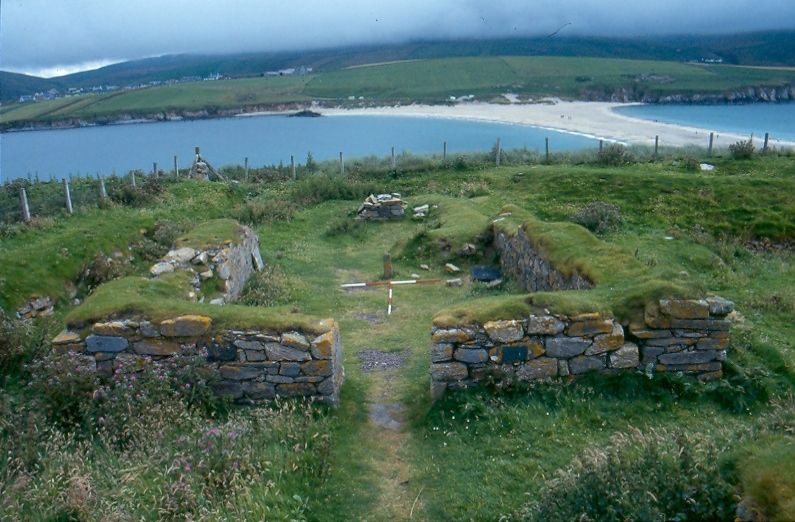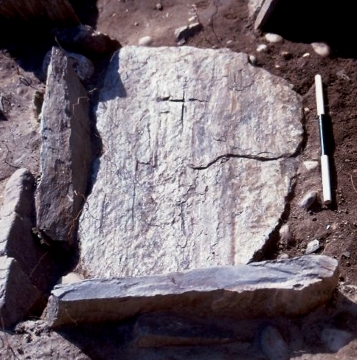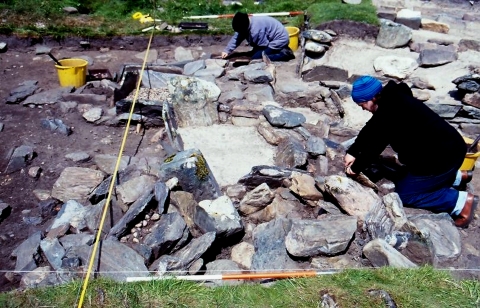St Ninian's Isle, Shetland

Author
Rachel Barrowman, University of Glasgow 
NGR
HU 3685 2090
Date ranges
Iron Age to post-medieval. C14 dates: 660-900 cal AD to 1020-1260 cal AD
Site summary
Between 1999 and 2008, this small research project based at Glasgow University undertook small-scale excavations and revisited the archaeology of St Ninian’s Isle. Previous work at the site in the 1950s was never published, and research into archive material and new specialist analyses of unpublished finds, combined with a dated excavation sequence established by the new work, has meant that it has been possible to bring to publication the findings from this extraordinary archaeological site.

The remains excavated include those of an Iron Age settlement of cellular buildings that was abandoned in the 7th century AD, when the site began to be used as a burial ground, first for pagan, and then Christian burials. The degree of continuity at the site between these burials suggests that the site was already considered a special place before the advent of Christianity. The first church was built on the site in the 8th century, accompanied by a long cist cemetery and shrine sculpture, and continued in use into the 9th or 10th centuries. The recent work has confirmed that the famous St Ninian’s Isle hoard, found in 1958, was buried under its floor.
Modelling of the radiocarbon dates from the burial assemblage demonstrate that it spans the native/Norse interface, with the Norse burials respecting the earlier short and long cists. A group of 10th century infant burials, marked by Norse-type cross-incised headstones were found to exhibit signs of malnutrition, and this may reflect a period of hardship amongst the local population at this time. By the Late Norse 11th/12th centuries, the site was being inundated with thick layers of windblown sand and one of the final burials before this inundation was that of an adult male who died a violent death and was moved post-mortem to be buried on the site.
Above this thick sand layer, a medieval chapel and burial ground were established that continued to be used into the medieval period and beyond.
Keywords
St Ninian’s Isle; St Ninian’s Isle hoard; chapel; burial ground; burials; long cists; cists; short cists; Viking burial; Late Iron Age burial; Norse burial; infant burials; Late Iron Age settlement
Bibliography
Barrowman, R C with contributions from K Forsyth and P Ashmore et al 2011 The Chapel and Burial Ground on St Ninian's Isle, Shetland: Excavations Past and Present. Series: Society for medieval archaeology monographs, 32. Wakefield: Society for Medieval Archaeology.
Barrowman, R 2003 ‘A decent burial? Excavations at St Ninian’s Isle, July 2000’, in J Downesand A Ritchie (eds.) Sea Change: Orkney and Northern Europe in the Later Iron Age AD 300- 800, 51-61. Balgavies: Pinkfoot Press.
Barrowman, R C Forthcoming 'Putting things in context: Re-visiting the archaeology of St Ninian’s Isle', in B Smith (ed.) The St Ninian’s Isle Treasure, Sixty Years Since, Proceedings of a conference held in 2008 to mark the finding of the St Ninian's Isle treasure, Lerwick: Shetland Times Publishing.

